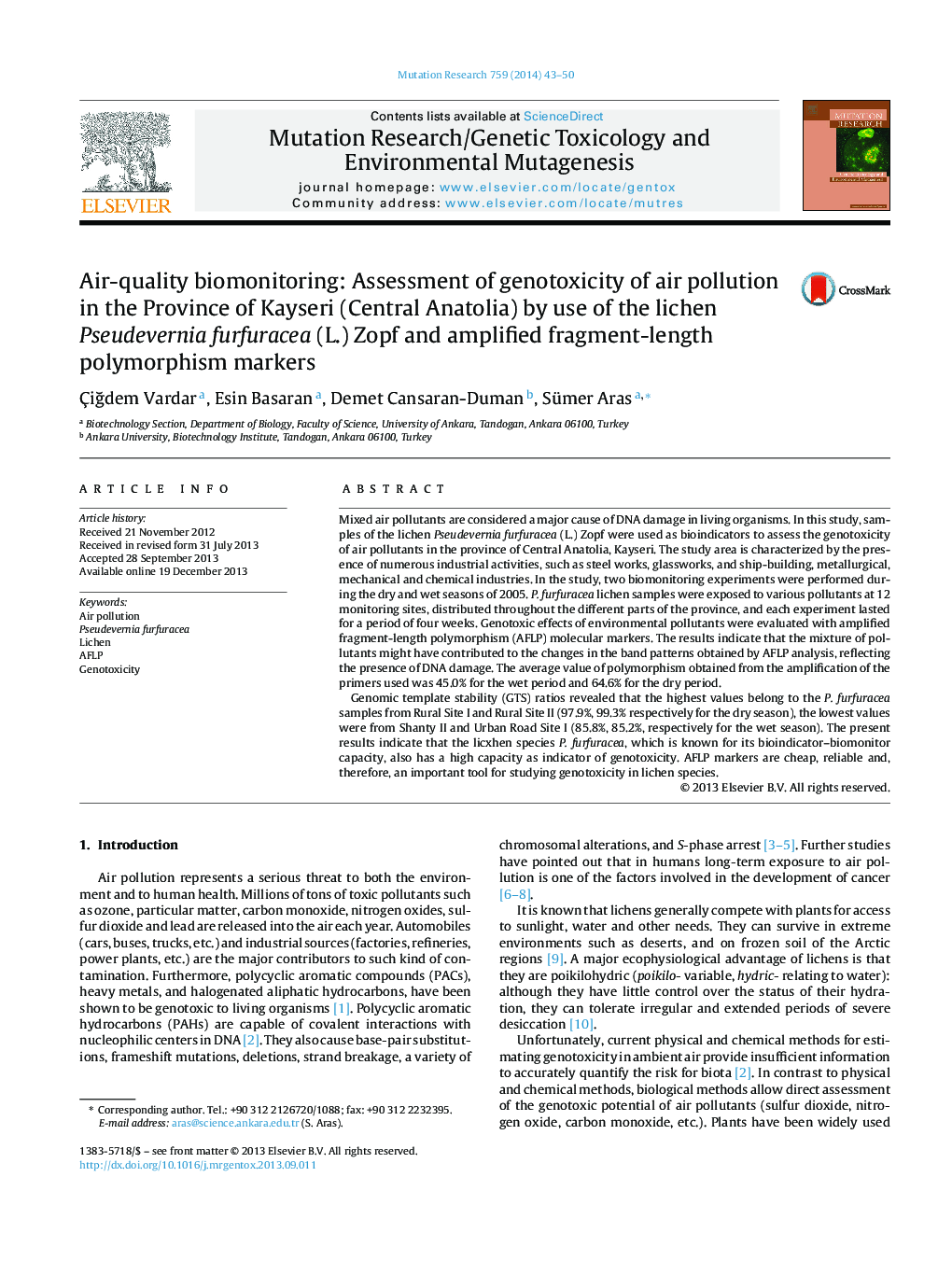| کد مقاله | کد نشریه | سال انتشار | مقاله انگلیسی | نسخه تمام متن |
|---|---|---|---|---|
| 2148035 | 1548601 | 2014 | 8 صفحه PDF | دانلود رایگان |
• We searched genotoxic effect of environmental pollutants on lichen by AFLP.
• Lichens could be a cheap, reliable and important tool for studying genotoxicity.
• This is the first report genotoxic effect of lichen species by using AFLP technique.
Mixed air pollutants are considered a major cause of DNA damage in living organisms. In this study, samples of the lichen Pseudevernia furfuracea (L.) Zopf were used as bioindicators to assess the genotoxicity of air pollutants in the province of Central Anatolia, Kayseri. The study area is characterized by the presence of numerous industrial activities, such as steel works, glassworks, and ship-building, metallurgical, mechanical and chemical industries. In the study, two biomonitoring experiments were performed during the dry and wet seasons of 2005. P. furfuracea lichen samples were exposed to various pollutants at 12 monitoring sites, distributed throughout the different parts of the province, and each experiment lasted for a period of four weeks. Genotoxic effects of environmental pollutants were evaluated with amplified fragment-length polymorphism (AFLP) molecular markers. The results indicate that the mixture of pollutants might have contributed to the changes in the band patterns obtained by AFLP analysis, reflecting the presence of DNA damage. The average value of polymorphism obtained from the amplification of the primers used was 45.0% for the wet period and 64.6% for the dry period.Genomic template stability (GTS) ratios revealed that the highest values belong to the P. furfuracea samples from Rural Site I and Rural Site II (97.9%, 99.3% respectively for the dry season), the lowest values were from Shanty II and Urban Road Site I (85.8%, 85.2%, respectively for the wet season). The present results indicate that the licxhen species P. furfuracea, which is known for its bioindicator–biomonitor capacity, also has a high capacity as indicator of genotoxicity. AFLP markers are cheap, reliable and, therefore, an important tool for studying genotoxicity in lichen species.
Journal: Mutation Research/Genetic Toxicology and Environmental Mutagenesis - Volume 759, 1 January 2014, Pages 43–50
